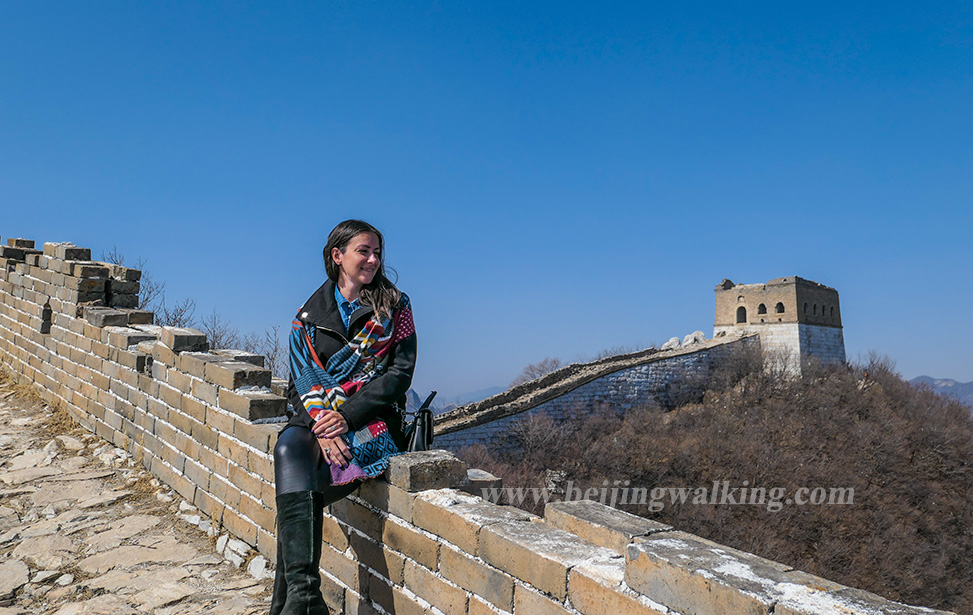20 Intriguing Secrets and Facts Revealed in Forbidden City
The Forbidden City, located in the heart of Beijing, China, is a mesmerizing imperial palace complex that has captivated visitors for centuries. Steeped in history and surrounded by mystery, the Forbidden City holds numerous intriguing secrets that often go unnoticed. In this blog post, we will explore 20 fascinating facts about the Forbidden City you may not know, shedding light on the hidden wonders of this iconic UNESCO World Heritage site.
1. There are 2 Forbidden City in China
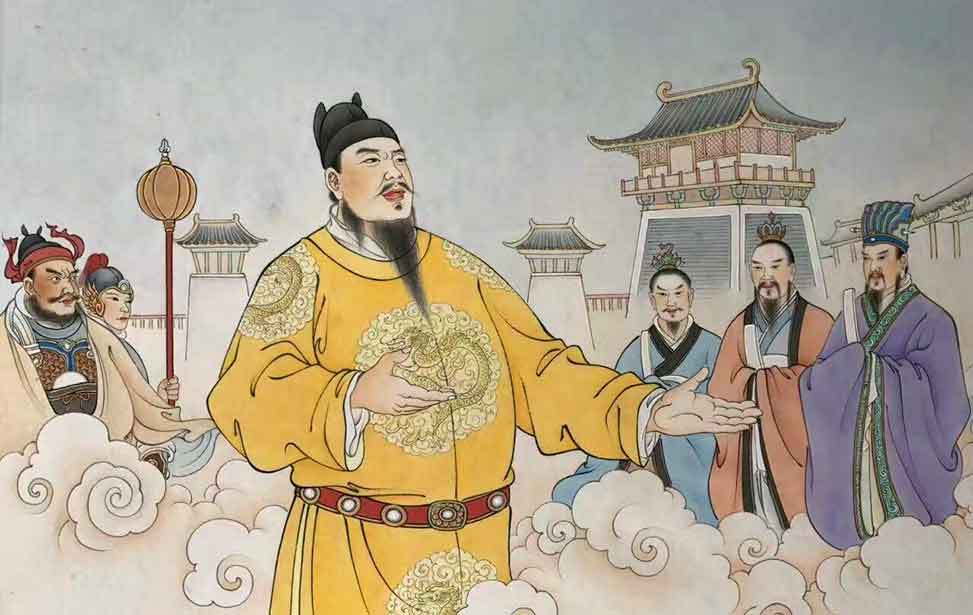
Emperor Yongle, Zhu Di, is the 4th Son of the first emperor Zhu Yuanzhang. Zhu Yuanzhang’s oldest Son, Zhu Biao, died young; he passed the throne to his grandson, Zhu Yunwen. Zhu Yunwen feared his influential uncles, so he started cutting the rights from his uncles once he became the 2nd emperor of Ming. So Zhu Di had to resist this and win the war. Zhu Di became the new emperor after he conquered the capital, Nanjing. He still finds it hard to control the old official groups since they consider Zhudi to get the throne in a dirty way.
Emperor Yongle decided to move the capital from Nanjing to Beijing, so a new palace had to be built for the emperor. But Emperor Yongle kept Nanjing as the 2nd capital to control South China. So, the Forbidden City in Beijing is almost a copy of the Palace in Nanjing.
2. Why is it called the Forbidden City?
The Forbidden City, located in Beijing, China, is called so because it was off-limits to the general public for over 500 years. The official Chinese name of the Forbidden City is “Zijin Cheng,” which translates to “Purple Forbidden City.” The term “forbidden” refers to the fact that ordinary people were not allowed to enter the palace complex without special permission from the emperor. This exclusivity was intended to enhance the emperor’s authority and maintain his divine status.
3. Forbidden City Construction
Designing
The designer: Kuai Xiang (蒯祥)
The Designing philosophy is the divine right of the emperor. According to Relics and Museology, the design is around the Hall of Supreme Harmony. All the important buildings are built on the axis of the Forbidden City to Highlight the imperial power.
Preparation
It took 11 years to prepare the material, the wood, and the rocks. The woods are all from the original forest in the high mountains of south China, which is said to be 1000 in and 500 out. The woods are all stored at the foot of the hill, waiting for the flood each year. The water can take the big lumber out of the mountains. Then, boat trackers took it from south to Beijing. The preparation of the rocks is also very tough. For example, the rock behind the Hall for Preserving Harmony is a single piece of stone of over 200 tons, and 20,000 people took 28 days to take it to the Forbidden City.
Did enslaved people build the Forbidden City?
Not really. The Ming Dynasty had a mature corvee system. Almost all the farmers had to work for the emperor. That’s why millions of people can be organized to build big projects such as the Great Wall of China.
4. The Secret of Numbers
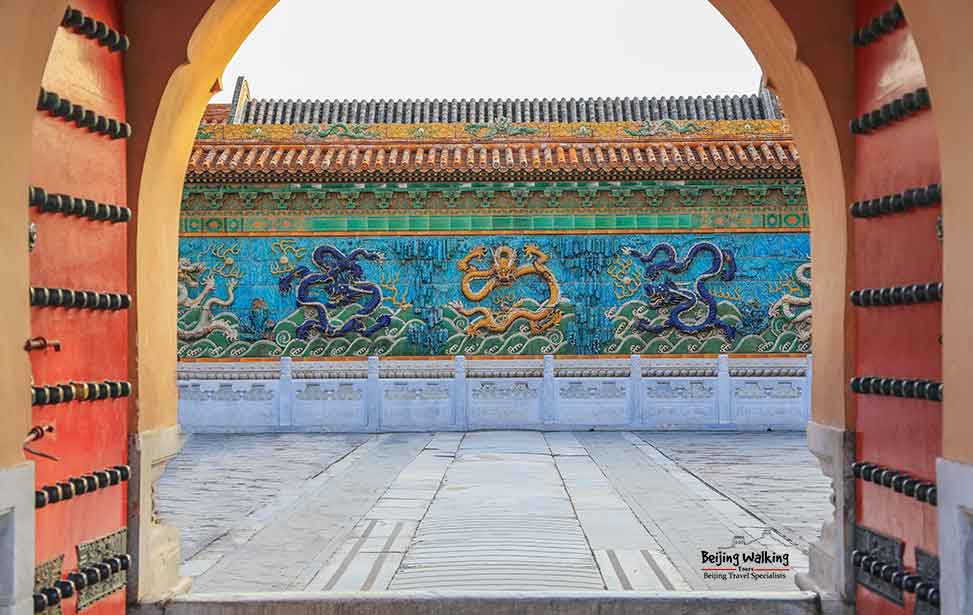
9 and 5
In the old days, people believed that China had nine great mountains and five big rivers. 9 was the most significant number, and five was in the middle, perfect for the emperor’s authority philosophy. So, 9 and 5 mean the whole world, which becomes the number that only belongs to the emperor. For example, all the buildings the emperor used to work and live in are nine rooms long and five rooms wide. The nine dragon screen has nine dragons, but four dragons look the same, so it is also an idea to show the 9-5. There are many places where you can find 9 and 5 designs. The length-width ratio is also 9:5.
The number of animals on the top of the roof
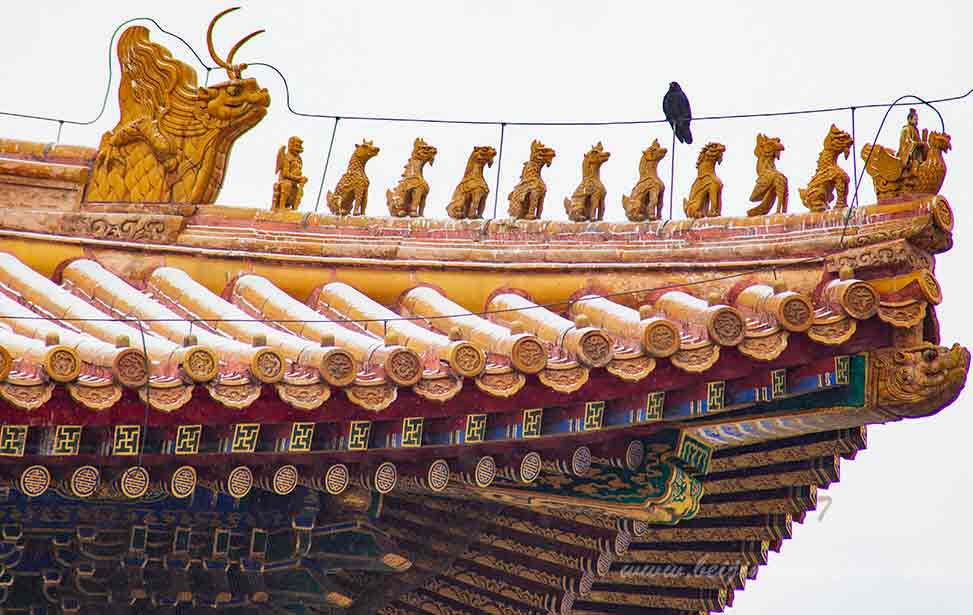
Each building in the Forbidden City has small animals on the roof. The number of animals tells us the ranking of the building. They are all odd numbers except the Hall of Supreme Harmony. 9 is usually the number for the emperor’s palaces, but the Hall of Supreme Harmony is the key to the Forbidden City, so ten roof animals are put there to show the importance of the Building.
5. How did the Forbidden City impact China?
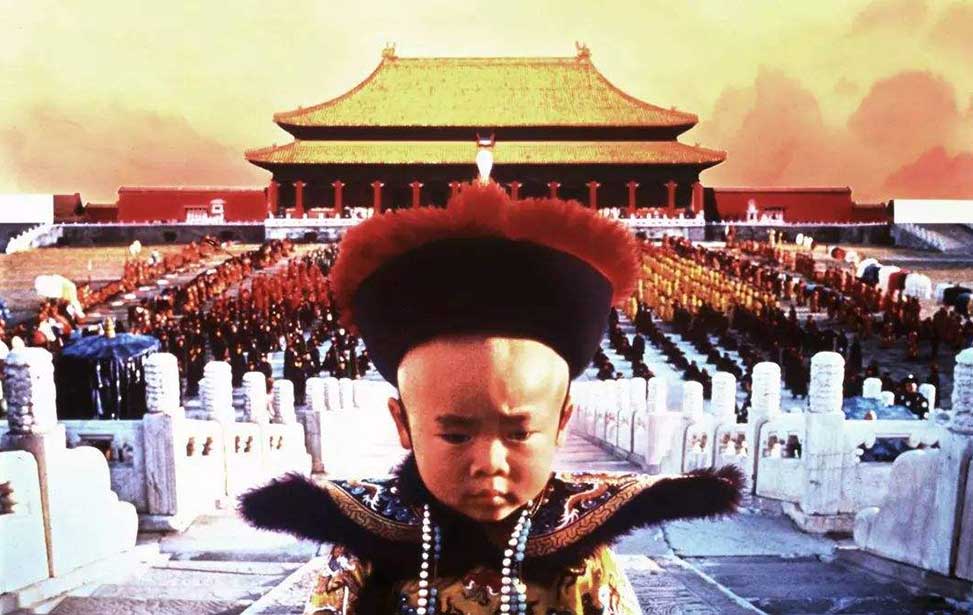
14 Ming and 1o Qing emperors lived and worked in the Forbidden City. The Emperor uses a lot of tools to control the power. For example, use the cabinet system to balance the high officials. Set a lot of spy organizations to monitor the high officials such as Dongcheng in the Ming dynasty. Use stereotyped writing for the examination to select talented persons to control people’s thinking.
6. How many wives did the emperor have?
A lot of people say the Chinese emperor has 3000 wives. That’s maybe the reason people are really into the throne. Traditionally, the emperor can have one queen and a lot of concubines.

So, the number 3000 also includes all the other palace maids in the Forbidden City. The concubines were also ranked as the officials; if they made the emperor happy, such as by born a son to the emperor, they could be promoted and earn more income.
7. Forbidden City Eunuchs
Eunuchs are the servants of the emperor’s family. The emperor uses Eunuchs to protect their family blood. These people are usually from low-income families and get rich if they are lucky enough to follow a good master. Some of them even get very powerful after getting the emperor’s trust. The number of Eunuchs in the Ming dynasty was about 100,000.
8. Other servants live in the Forbidden City.
Plenty of beautiful girls are selected from all over the country, but only very few get the favor of the emperors to become concubines. Some of them were gifts from the emperor to the high officials. Most of them had to work as palace maids in the end. If they couldn’t become a concubine, they had to be sent home after 25 years old.
Forbidden City Legitimize Rule
9. Ming Dynasty Legitimize rule
The Ming Dynasty was very strict with the lineal primogeniture system. The successor order: 1. The son born by the queen. 2. the oldest Son from other concubines. 3. the younger brother.
10. Qing Dynasty Legitimize rule
The Qing Dynasty used the family election system to choose the King at the beginning of the empire, such as the emperors Shunzi and Kangxi. Emperor Kangxi changed the legitimized rule to the lineal primogeniture system. But the crown prince made many mistakes, and he finally decided to dismiss him. So, the secret appointment system came into being. The emperor just said he would like the son to be the successor. But this can cause many problems if the emperor dies without choosing anyone.
So, Emperor Qianlong issued a formal instruction. The Emperor will write down the successor’s name on two pieces of paper and put them in 2 boxes; one will be placed in his bedroom, while another will be put on the top of his office. So, no one knows the name of the next emperor. After the emperor died, the high officials took 2 of these boxes out to announce the next successor.
11. How to move a piece of 200 tons of rock to Beijing back 600 years ago?
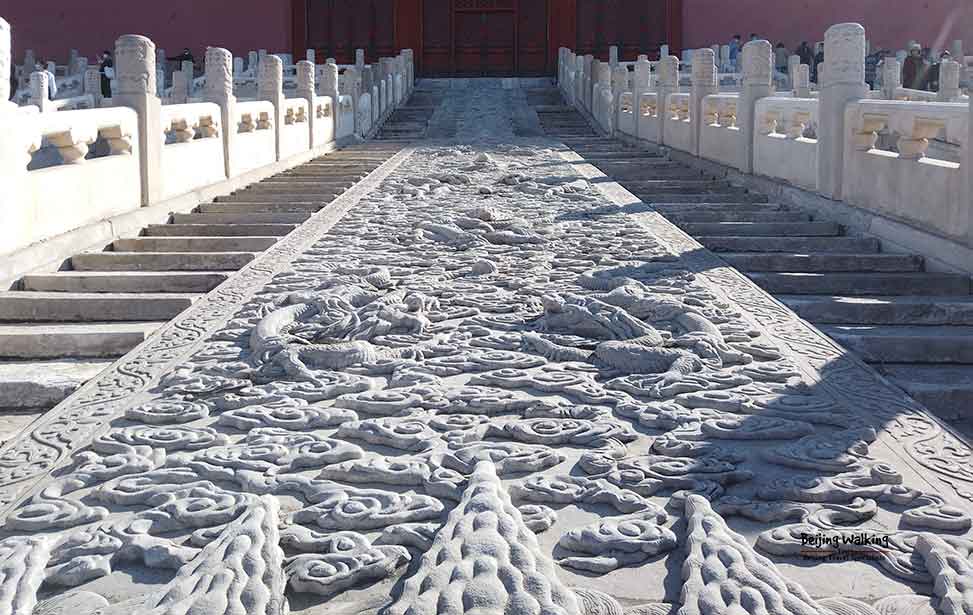
This rock is located on the north side of the Hall of Preserving Harmony. This job could only be done in winter. Thousands of water wells were dug on the way, and people poured the water on the road. After the water froze, put the wood bars on the road to make the rock slide to Beijing. It is a single piece of rock over 200 tons. It took 20000 people and 1000 mules 28 days to move it to the forbidden city from 80 km away.
12. Why is there no tree in the outer court?
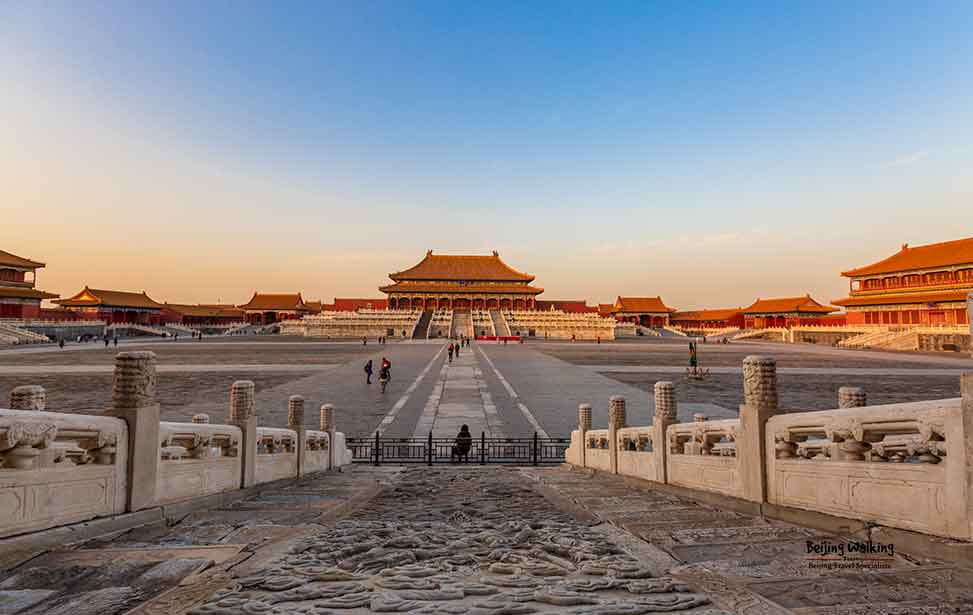
When you enter the Square of the Supreme Harmony, you will find a vast square without trees. In China, the word “困” means trap, a tree inside a courtyard surrounded by walls from 4 directions. The emperor doesn’t want himself in a trap, so trees are not allowed here.
Another reason is this design can show the emperor’s authority. The Forbidden City is only opened to the high officials to pay respect to the emperor; the plan here is more like a place where god lives. There are no trees in heaven and no trees here.
13. 9999.5 rooms
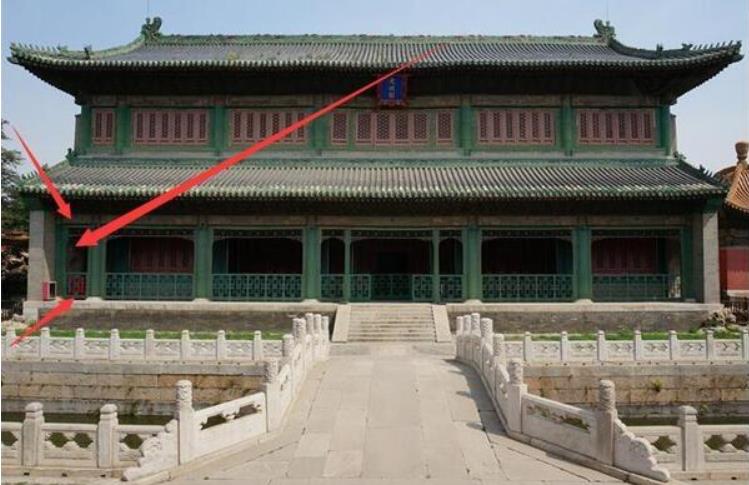
The design of 9999 rooms is because the god from Taoism — the Jade emperor, lives in the palace with 10000 rooms; by showing respect to the god, the emperor makes his palace 1 room less than the god.
But the imperial library had the most important books, and the palace was all made of wood, so it was easy to catch fire by lighting or people. The buildings always have an odd number of rooms, such as 9, 7, and 5. This building should have five rooms, but the number 6 means fire protection. So the half room was made. Not break the rule for the construction, but stop the fire.
14. Golden Water River is like an arrow bow
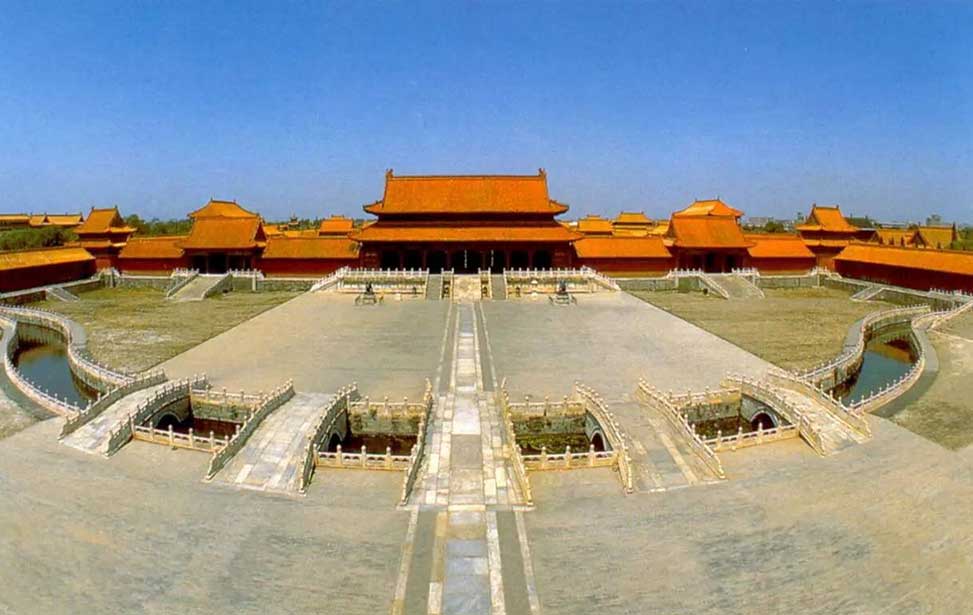
There are a lot of feng shui sayings in China. The emperor especially likes it. When we go inside the Forbidden City, we will first get to a beautiful bridge called the Golden Water Bridge. The shape of it is like the arrow bow, and the bridges are like the arrows to protect the emperor who lives and works inside.
15. A popular fake glazed tile
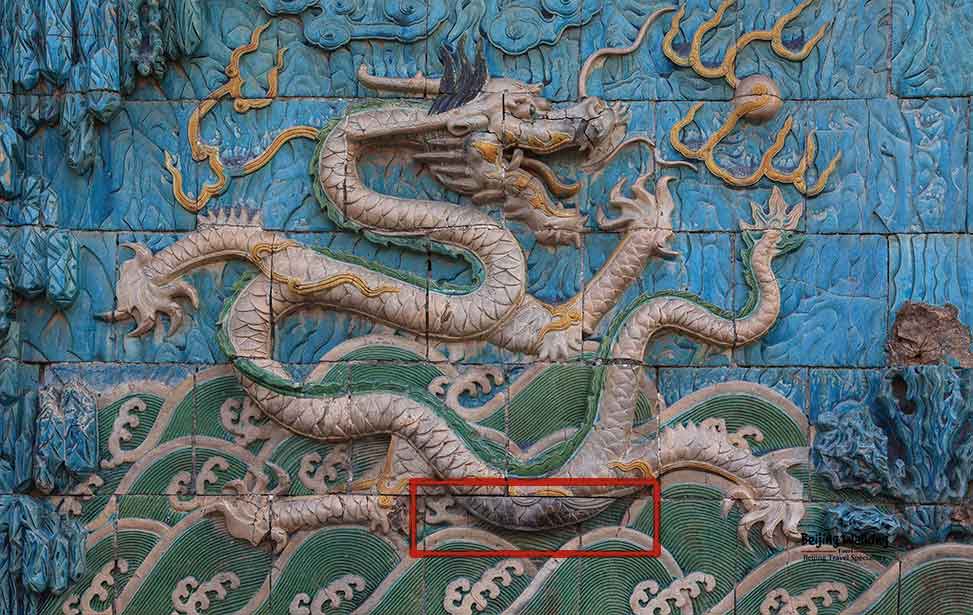
Inside the nine dragon screen is a dragon with a wooden body, and the others are all glazed tiles. Emperor Qianlong plans to move to this palace for his retirement life. All the materials are well designed before proceeding here. A few days before the project finished, when the workers were focusing on their walk, a glazed tile fell and broke. The emperor would check this in 2 days. If he found the screen was unfinished and broke like this, all the artists and works would be heavily punished. There was not enough time to make the same tile quickly, so one of the chief artists used two days to make a wooden tile that looked identical to the original. So the emperor didn’t find this and stayed like this until today.
16. The baby lions are 100% a boy
There are always lions in front of the imperial buildings and temples. Some may be told that the one on the right with a ball is a male lion, symbolizing the man controlling the power. The lion on the left with the baby in hand is a female, representing the woman’s job is to have more babies. But when you observe, you will be surprised by this:
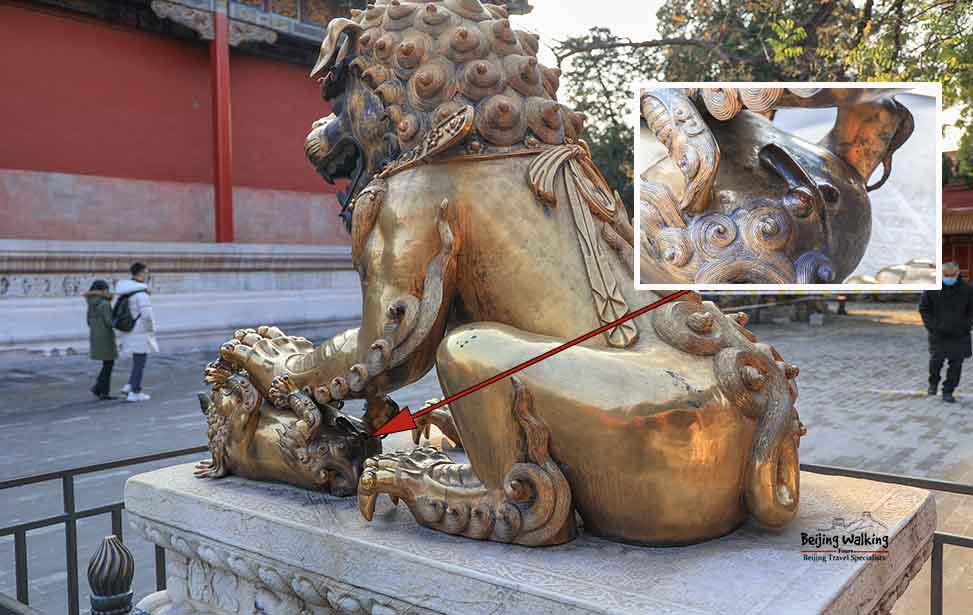
This means all the baby lions are boys. That’s to say, people like boys, and boys can keep their family name. But it is not the same today; boy and girl are the same. Don’t forget to check this when you travel here.
17. The scratch bronze vase tells us a corruption history
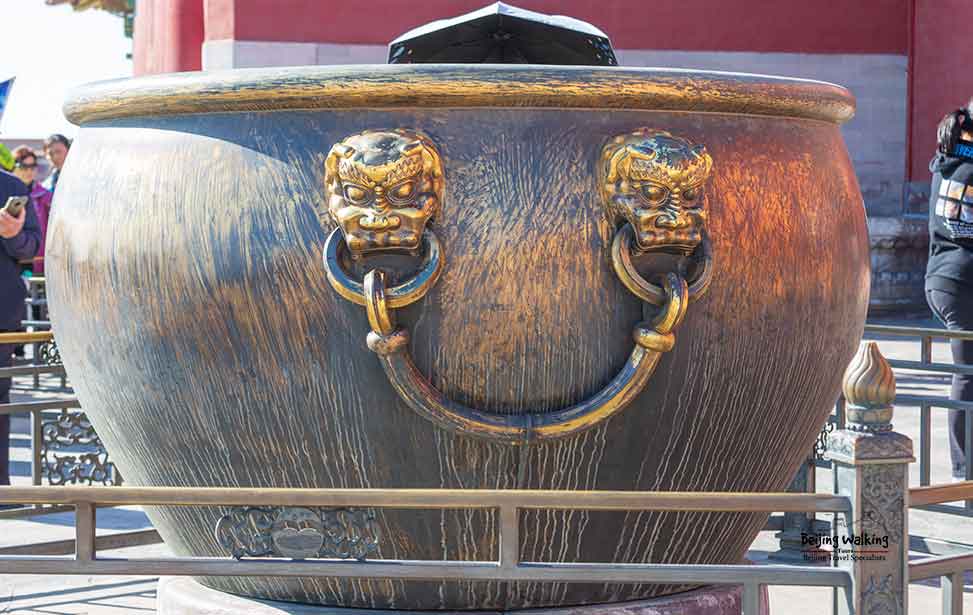
As the vats are for fire, to show off the incredible power of the empire, Emperor Qianlong from the Qing dynasty made 18 gold vats displayed by the Hall of Supreme Harmony. But the emperor didn’t know that the gold he planned to use was corrupted by his favorite official — Heshen. Heshen uses an outstanding gold plating technology, making the vats look the same as real gold.
But in 1900, Bejing was conquered by the Western invaders. The soldiers can’t take the giant vats with them, so they decide to break them and take them away. Finally, they found they were not actual gold vats, so they scratched the gold and took away only the bronze vates here till today.
18. The doorsills are cut off by the last emperor, Puyi
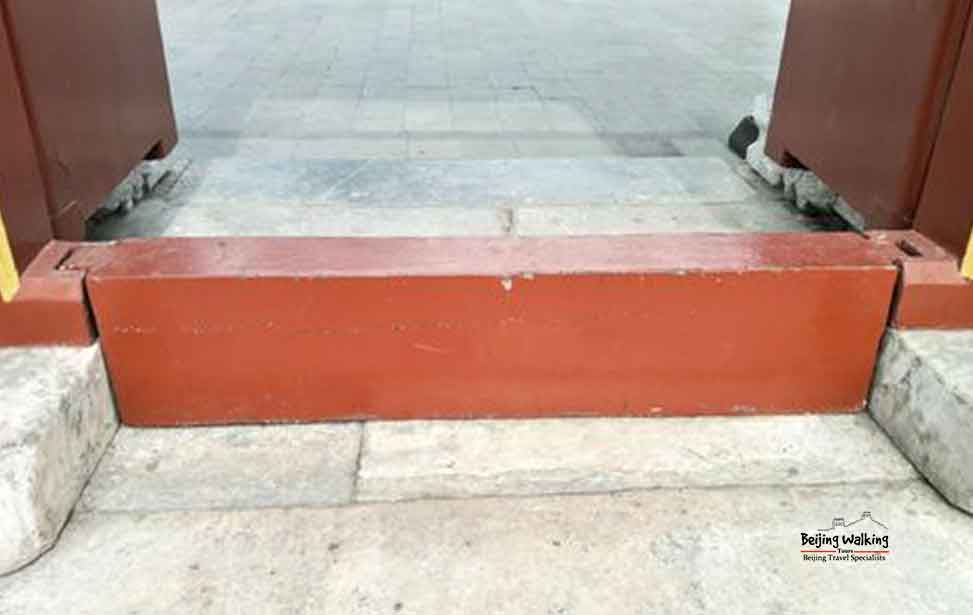
The doorsills are very important in Chinese culture. It symbolizes the social status of the family. Especially in the Forbidden City, there are plenty of doorsills, all of which are pretty high. The government also regulated the height.
When you visit the six western palaces in the inner court of the Forbidden City, you may find some doorsills like this.
The last Emperor, Puyi, wanted to ride his bike, so he asked people to cut them off. This makes the imperial family super angry. So Puyi has to keep the doorsills. After he rides the bike, the servants put these doorsills back.
19. The concubine’s fishpond
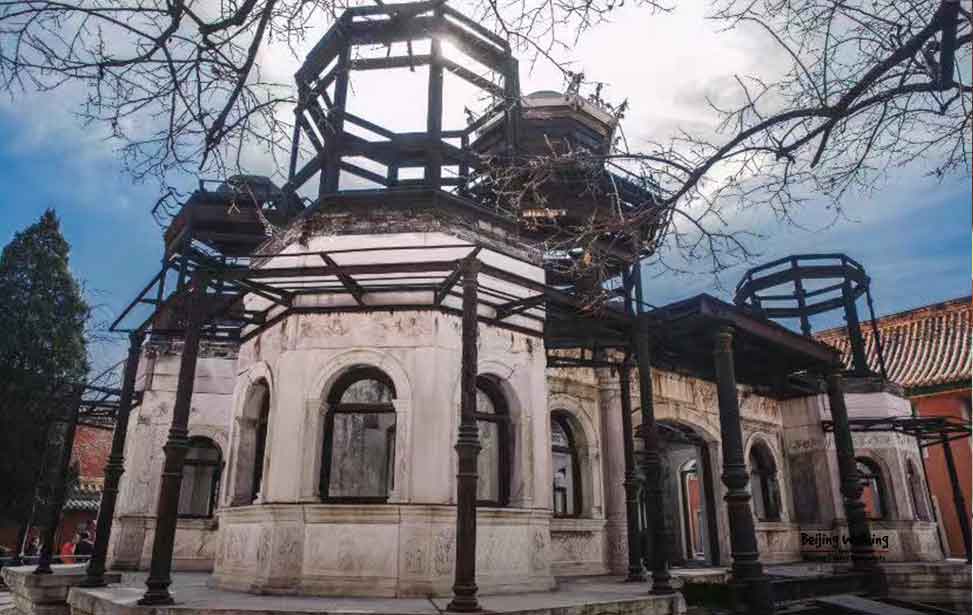
There is an extraordinary building inside the Forbidden City at the Yanxi Palace. It is a Western-style house but not finished.
The palace life was very dull, especially for Puyi and his wives. They were not allowed to go out. But the imperial family worried that one day, if the government expels Puyi, he could go to the UK for political asylum. So, the Western culture was brought in by his English teacher. All the imperial family starts to pursue and learn everything from the West.
Their family was still rich back then, so a Western-style water park was starting to be built here. Unfortunately, Puyi was expelled in 1924, and the water park was unfinished. So we can only see this ruin today.
20. All the water vases have a hole at the button; why?
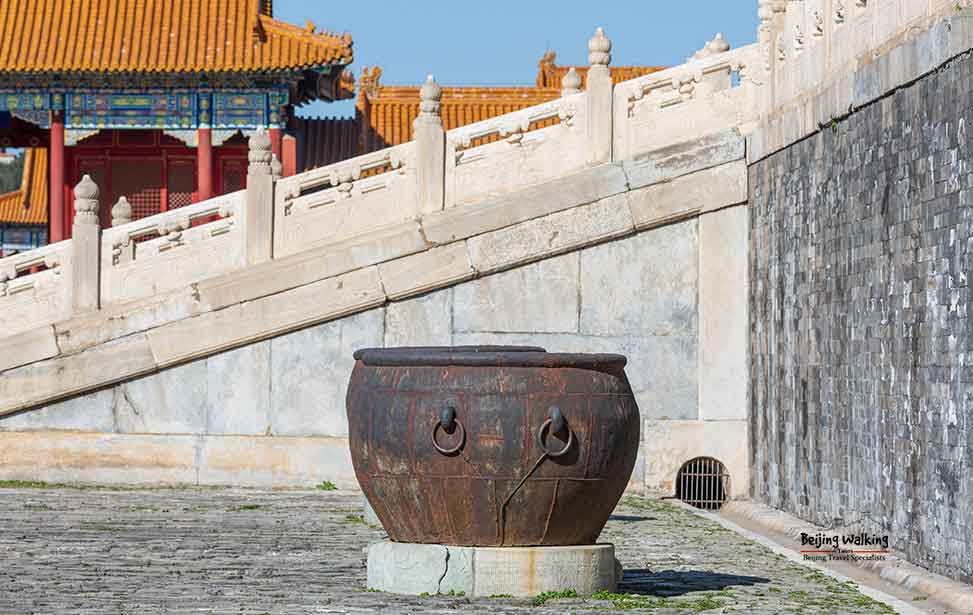
There are 308 vats inside the Forbidden City. All the buildings inside were wood structures, so fire protection was critical. This kind of vat is almost everywhere in the Forbidden City. As Beijing is cold in winter, a hole at the bottom was used to burn coal to make the water liquid. But when you look inside, all the vats have a hole in the middle; why? Because the Forbidden City has a modern firefighter group, the old way is not needed anymore. It was easy to have mosquitoes after rain in the summer, so people made a hole to draw off the water.






